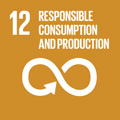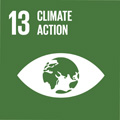- Docente: Fabrizia Grepioni
- Credits: 5
- SSD: CHIM/03
- Language: Italian
- Teaching Mode: Traditional lectures
- Campus: Bologna
- Corso: First cycle degree programme (L) in Chemistry and Materials Chemistry (cod. 8006)
Learning outcomes
At the end of the course the student is expected to possess a basic knowledge of the main classes of functional and structural materials, their properties and applications.
Course contents
Introduction.
Metals: Diffusion mechanisms. Overview of mechanical properties.
Deformation mechanisms. Hardening methods and mechanisms.
Recovery, recrystallization, grain growth.
Phase Diagrams and binary systems: Cu-Ni, Sn-Pb and Fe-C alloys.
Phase transformation kinetics. TTT diagrams for steel.
Shape memory alloys. Ferrous and non-ferrous alloys.
Ceramic materials. Phase diagrams and mechanical properties.
Classic ceramic materials. Cements.
Silicium and silicates. Zeolites: structure, synthesis, applications.
Glasses: structural models, preparation, reactivity, thermal/mechanical/optical properties. Optical fibres.
Laboratory (1CFU)
-------------------------------------
Please note that:
“Activities in the chemical laboratory are part of the course. In order to participate in lab experiences, all students must have attended health and safety Modules 1 and 2 [e-learning mode at https://www.unibo.it/it/servizi-e-opportunita/salute-e-assistenza/salute-e-sicurezza/sicurezza-e-salute-nei-luoghi-di-studio-e-tirocinio] and Module 3 [in presence]. Information about Module 3 dates and locations will be published in the <Chimica and Chimica dei Materiali> website. “
Readings/Bibliography
Callister "Materials Science and Engineering", Wiley John + Sons; 8th edition. International Student Version. (7th edition is also ok).
Teaching methods
Lessons, laboratory, excercises
Assessment methods
Oral or written examination.
Teaching tools
powerpoint, graphic softwares
Office hours
See the website of Fabrizia Grepioni
SDGs


This teaching activity contributes to the achievement of the Sustainable Development Goals of the UN 2030 Agenda.
